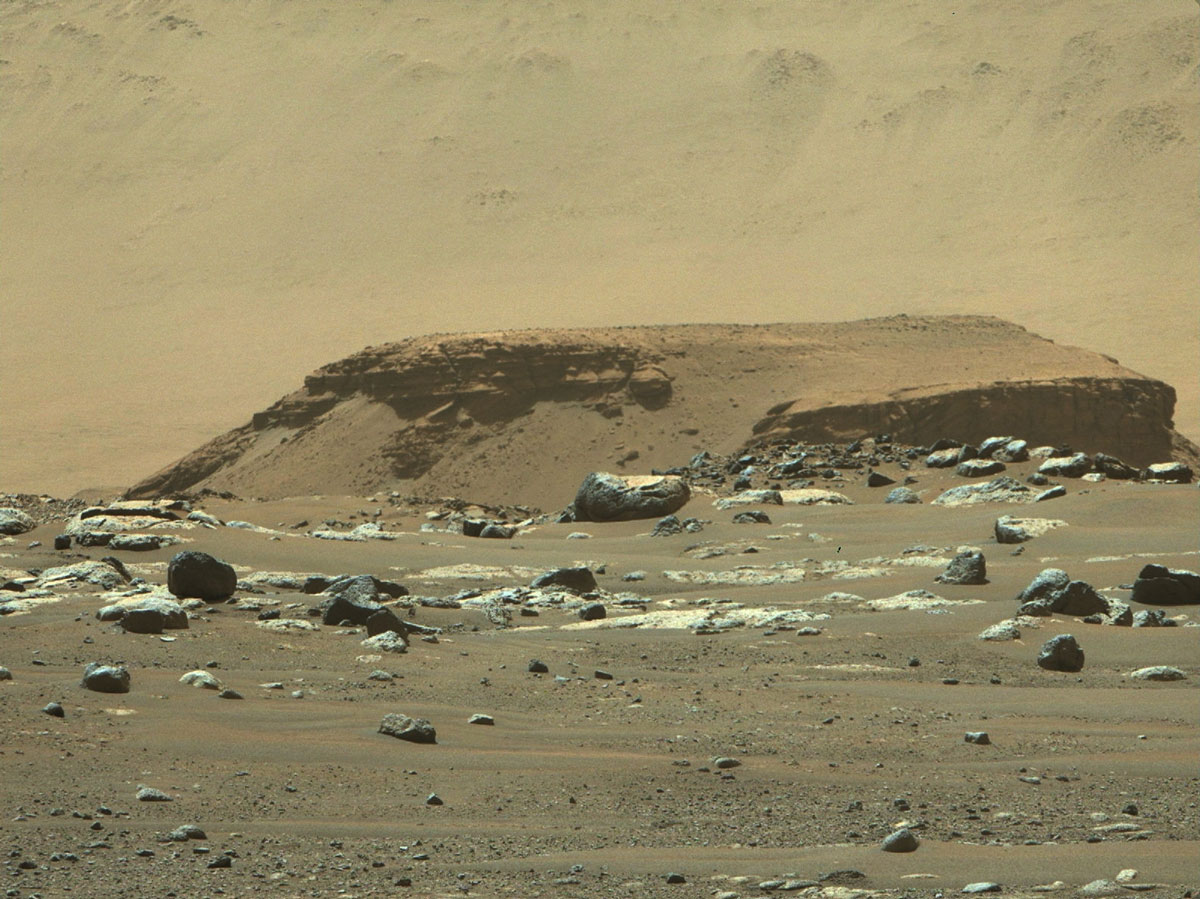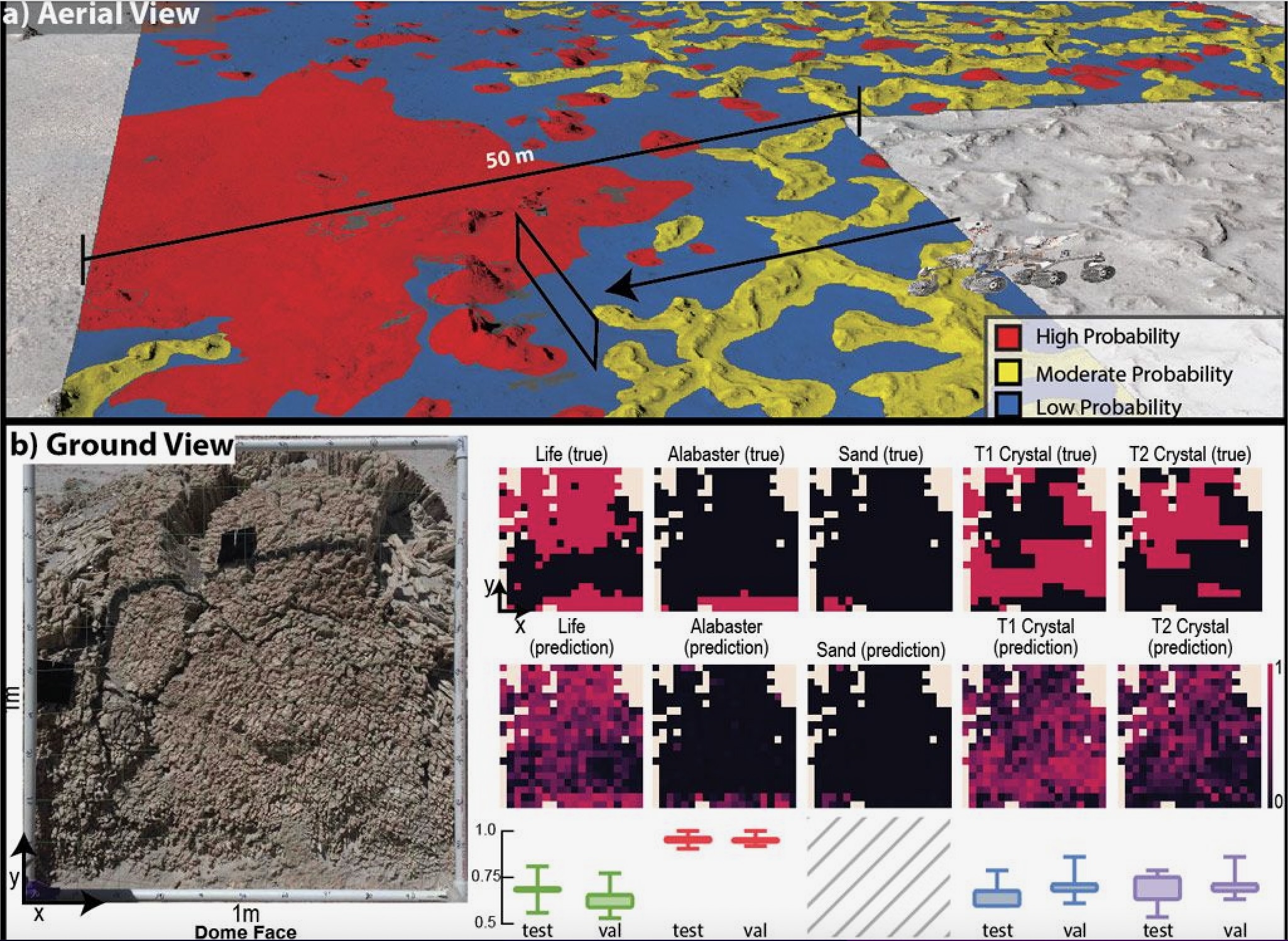Artificial intelligence could help hunt for life on Mars and other alien worlds
A new machine learning model could point researchers toward the most promising abodes for life away from Earth.

A newly developed machine-learning tool could help scientists search for signs of life on Mars and other alien worlds.
With the ability to collect samples from other planets severely limited, scientists currently have to rely on remote sensing methods to hunt for signs of alien life. That means any method that could help direct or refine this search would be incredibly useful.
With this in mind, a multidisciplinary team of scientists led by Kim Warren-Rhodes of the SETI (Search for Extraterrestrial Intelligence) Institute in California mapped the sparse lifeforms that dwell in salt domes, rocks and crystals in the Salar de Pajonales, a salt flat on the boundary of the Chilean Atacama Desert and Altiplano, or high plateau.
Related: The search for alien life (reference)

Warren-Rhodes then teamed up with Michael Phillips from the Johns Hopkins University Applied Physics Laboratory and University of Oxford researcher Freddie Kalaitzis to train a machine learning model to recognize the patterns and rules associated with the distribution of life across the harsh region. Such training taught the model to spot the same patterns and rules for a wide range of landscapes — including those that may lie on other planets.
The team discovered that their system could, by combining statistical ecology with AI, locate and detect biosignatures up to 87.5% of the time. This is in comparison to no more than a 10% success rate achieved by random searches. Additionally, the program could decrease the area needed for a search by as much as 97%, thus helping scientists significantly hone in their hunt for potential chemical traces of life, or biosignatures.
"Our framework allows us to combine the power of statistical ecology with machine learning to discover and predict the patterns and rules by which nature survives and distributes itself in the harshest landscapes on Earth," Warren-Rhodes said in a statement. "We hope other astrobiology teams adapt our approach to mapping other habitable environments and biosignatures."
Breaking space news, the latest updates on rocket launches, skywatching events and more!
Such machine learning tools, the researchers say, could be applied to robotic planetary missions like that of NASA's Perseverance rover, which is currently hunting for traces of life on the floor of Mars' Jezero Crater.
"With these models, we can design tailor-made roadmaps and algorithms to guide rovers to places with the highest probability of harboring past or present life — no matter how hidden or rare," Warren-Rhodes explained.
Picking an analog for Mars on Earth
The team chose Salar de Pajonales as a testing stage from their machine learning model because it is a suitable analog for the dry and arid landscape of modern-day Mars. The region is a high-altitude dry salt lakebed that is blasted with a high degree of ultraviolet radiation. Despite being considered highly inhospitable to life, however, Salar de Pajonales still harbors some living things.
The team collected almost 8,000 images and over 1,000 samples from Salar de Pajonales to detect photosynthetic microbes living within the region's salt domes, rocks and alabaster crystals. The pigments that these microbes secrete represent a possible biosignature on NASA's "ladder of life detection," which is designed to guide scientists to look for life beyond Earth within the practical constraints of robotic space missions.
The team also examined Salar de Pajonales using drone imagery that is analogous to images of Martian terrain captured by the High-Resolution Imaging Experiment (HIRISE) camera aboard NASA's Mars Reconnaissance Orbiter. This data allowed them to determine that microbial life at Salar de Pajonales is not randomly distributed but rather is concentrated in biological hotspots that are strongly linked to the availability of water.
Warren-Rhodes' team then trained convolutional neural networks (CNNs) to recognize and predict large geologic features at Salar de Pajonales. Some of these features, such as patterned ground or polygonal networks, are also found on Mars. The CNN was also trained to spot and predict smaller microhabitats most likely to contain biosignatures.
For the time being, the researchers will continue to train their AI at Salar de Pajonales, next aiming to test the CNN's ability to predict the location and distribution of ancient stromatolite fossils and salt-tolerant microbiomes. This should help it to learn if the rules it uses in this search could also apply to the hunt for biosignatures in other similar natural systems.
After this, the team aims to begin mapping hot springs, frozen permafrost-covered soils and the rocks in dry valleys, hopefully teaching the AI to hone in on potential habitats in other extreme environments here on Earth before potentially exploring those of other planets.
The team's research was published this month in the journal Nature Astronomy.
Follow us on Twitter @Spacedotcom and on Facebook.
Join our Space Forums to keep talking space on the latest missions, night sky and more! And if you have a news tip, correction or comment, let us know at: community@space.com.

Robert Lea is a science journalist in the U.K. whose articles have been published in Physics World, New Scientist, Astronomy Magazine, All About Space, Newsweek and ZME Science. He also writes about science communication for Elsevier and the European Journal of Physics. Rob holds a bachelor of science degree in physics and astronomy from the U.K.’s Open University. Follow him on Twitter @sciencef1rst.
-
PedroXY it might even be relevant to a discovery about panspermia that would signify the origin of life that now inhabits Earth.Reply
"Considering the state of Mars in the early solar system" -
Atilla De Bum Assuming ancient Mars had oceans and an atmosphere, life could have started there only to be wiped out when a large asteroid impact striped away the atmosphere and flung chunks bearing DNA snippets and Building Blocks on an intercept course with Earth. Are We From MARS ? There is a Possibility.Reply -
PedroXY if evidence were found in relation to this serious of such magnitude to prove that the universe is populated by thousands or even billions of life in a unicellular state like microorganisms in space rocks like asteroids and walking comets.Reply
